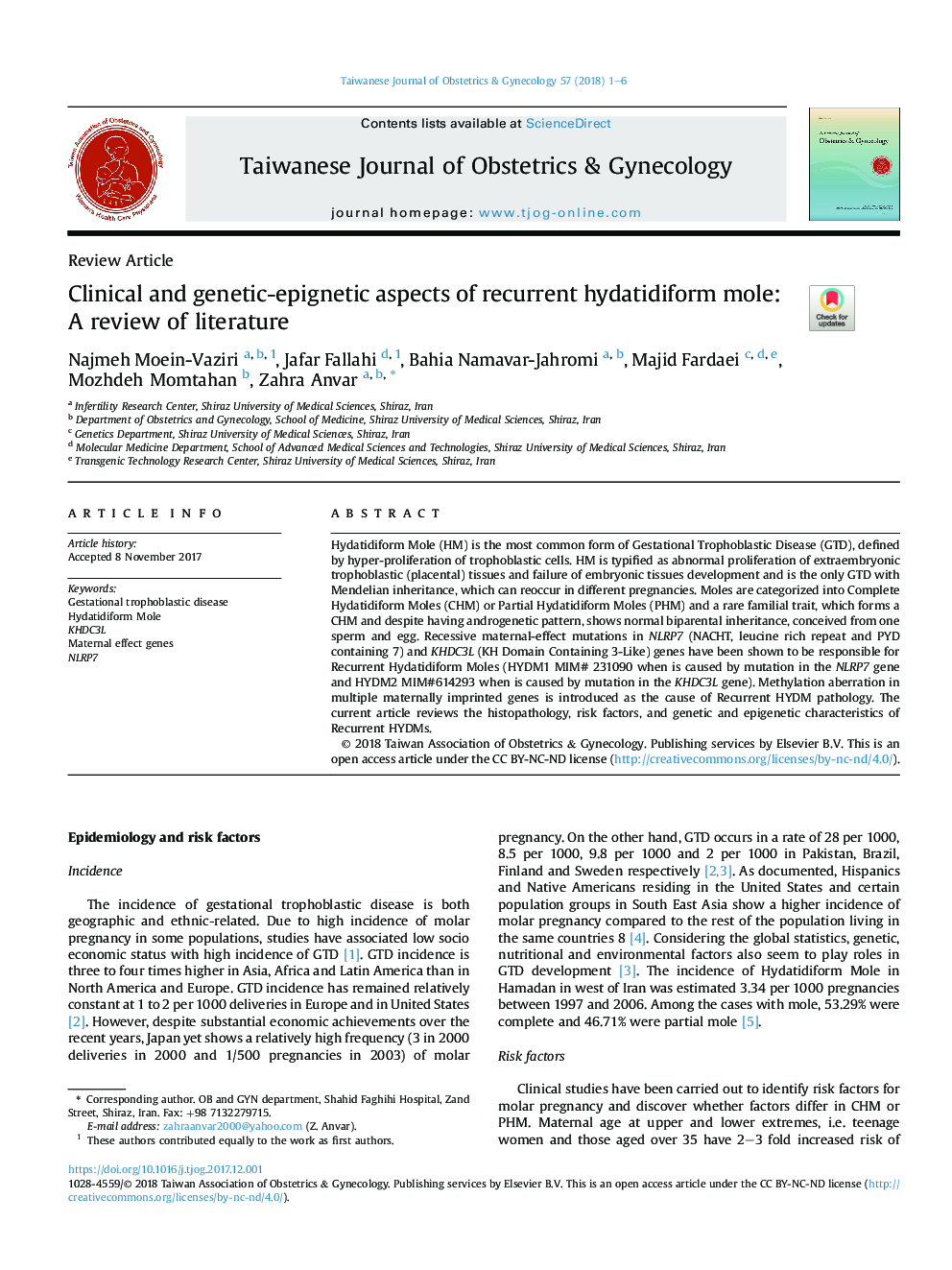| Article ID | Journal | Published Year | Pages | File Type |
|---|---|---|---|---|
| 8784416 | Taiwanese Journal of Obstetrics and Gynecology | 2018 | 6 Pages |
Abstract
Hydatidiform Mole (HM) is the most common form of Gestational Trophoblastic Disease (GTD), defined by hyper-proliferation of trophoblastic cells. HM is typified as abnormal proliferation of extraembryonic trophoblastic (placental) tissues and failure of embryonic tissues development and is the only GTD with Mendelian inheritance, which can reoccur in different pregnancies. Moles are categorized into Complete Hydatidiform Moles (CHM) or Partial Hydatidiform Moles (PHM) and a rare familial trait, which forms a CHM and despite having androgenetic pattern, shows normal biparental inheritance, conceived from one sperm and egg. Recessive maternal-effect mutations in NLRP7 (NACHT, leucine rich repeat and PYD containing 7) and KHDC3L (KH Domain Containing 3-Like) genes have been shown to be responsible for Recurrent Hydatidiform Moles (HYDM1 MIM# 231090 when is caused by mutation in the NLRP7 gene and HYDM2 MIM#614293 when is caused by mutation in the KHDC3L gene). Methylation aberration in multiple maternally imprinted genes is introduced as the cause of Recurrent HYDM pathology. The current article reviews the histopathology, risk factors, and genetic and epigenetic characteristics of Recurrent HYDMs.
Related Topics
Health Sciences
Medicine and Dentistry
Obstetrics, Gynecology and Women's Health
Authors
Najmeh Moein-Vaziri, Jafar Fallahi, Bahia Namavar-Jahromi, Majid Fardaei, Mozhdeh Momtahan, Zahra Anvar,
